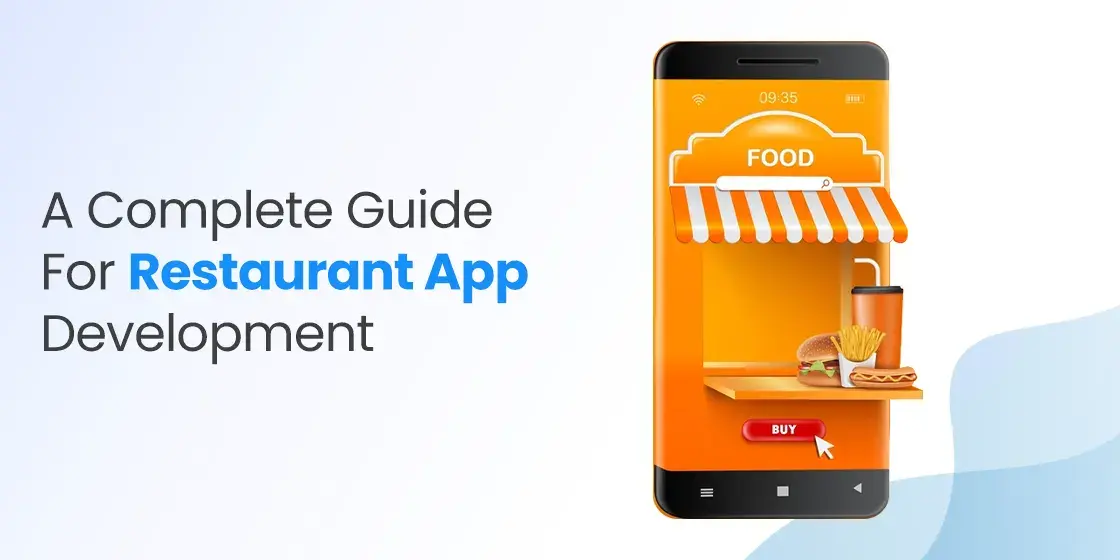Table of Content
Know About App Development for Restaurants in Detail Below
Every food chain business these days manage its operations through a unified software system. They understand that taking matters on their hands can make things messy, and can eat a lot of time. The best way to manage them is by using a restaurant app that is built with different types of features. It is quite an advanced system that allows you to automate different processes without indulging in any manual hassle. It is best advised to always take quality mobile app development services from a renowned agency, as that ensures cutting edge restaurant app development as per the latest standards.
Speaking about the benefits, there are many advantages of app development for restaurants. As a food chain owner, you would know the everyday hustle of managing different things simultaneously. From daily finances to inventory management, these tasks are certainly not easy, hence they require a complete system that can manage things on the fingertips.
That is where the importance of quality restaurant app development comes into play. It eases your work by unifying everything inside a single platform. You don’t have to juggle between different registers or notebooks to keep a track of various restaurant essentials. With the help of a management system, it all becomes too easy without requiring much manual effort.
In this blog, we will take a detailed look into the development of these apps, so that beginners can understand everything about them. Let’s start from the basics knowing why restaurant management apps are becoming essential for food centers.
Importance Of App Development For Restaurants
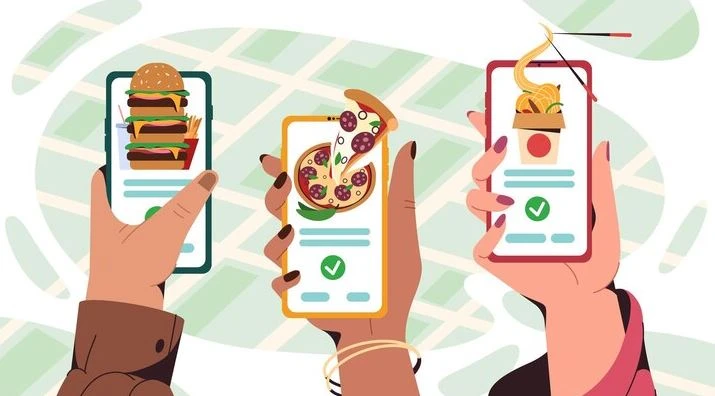
Food centers, whether they are small eateries or large restaurants, can greatly benefit from restaurant management app development. First and foremost, such applications streamline and automate various aspects of daily operations, enhancing overall efficiency. From inventory management to order processing and employee scheduling, a restaurant management app can centralize these functions, reducing the likelihood of errors and ensuring smoother day-to-day functioning.
Secondly, a restaurant management app enhances customer experience and satisfaction. Features like online reservations, digital menus, and order tracking provide convenience for customers, aligning with the growing trend of digitalization in the hospitality industry. These apps enable food centers to adapt to changing consumer preferences, offering personalized services and ensuring a more seamless dining experience.
Lastly, the data analytics capabilities of restaurant management apps are instrumental in making informed business decisions. By analyzing sales patterns, customer preferences, and other key metrics, food centers can identify trends, optimize their menu offerings, and implement targeted marketing strategies. This data-driven approach contributes to strategic planning, helping restaurants stay competitive in a dynamic market.
Important Food Industry Insights
We all know the fact that the food industry is growing rapidly around the world. During the last few years, it has witnessed a staggering growth, let alone in 2022 which saw the food industry amassing $8.6 trillion in valuation. This shows how big the food industry is, and why its business looks lucrative to many investors. They understand the opportunities in this circuit, as fast foods are quickly becoming the go-to meal for many people.
Talking about the recent stats, the online food services surpassed the number of $9 trillion in 2023. This also broke the record of previous year, illustrating the annual growth of 6.74%. Going by this, it could be easily said that the number of this industry will continue grow more in the years ahead. In fact, the number of customers using online food ordering services are expected to grow by 2500 million by 2027.
Step by Step Process for Restaurant Application Development
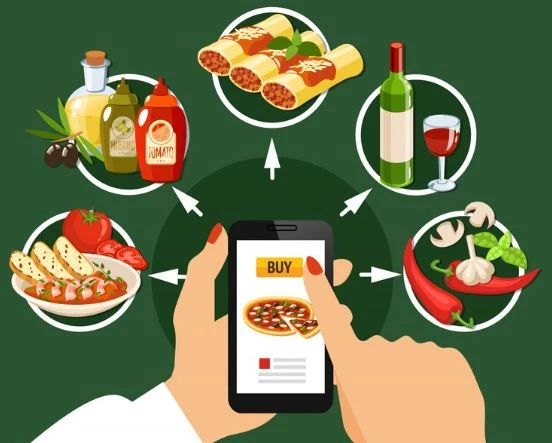
To develop a quality restaurant management system, you need to follow some basics of development. A lot of times, people do not follow them properly, and end up with a faulty product in hand at last. If you do not know what these basic steps are, take a look at the points defined below.
Research Excessively
Prior to commencing any project, it is prudent to undertake a concise market research. This crucial step is advocated for various project types, spanning from graphic design to FemTech app development and more. Industry research is deemed essential across the board, offering valuable insights into ongoing discussions and trends. Aligning your project with these insights enhances the likelihood of success, while neglecting them may result in wasted efforts.
Select Application Type
Moving forward, it is crucial to decide the type of application you intend to develop. Whether opting for a native or cross-platform app, this choice should be made wisely at this juncture. Unfortunately, many individuals overlook this aspect after completing restaurant app development, neglecting fundamental principles and showcasing their inexperience in the field. Consequently, they encounter numerous challenges during the development process, consuming a significant portion of their valuable time.
Create a Design Mockup
Once you’ve settled on the type of application, the next step is to initiate the restaurant management app development process. However, before delving into development, it is advisable to craft a mockup. This recommendation stems from market experience, recognizing that developers frequently make errors during mobile app creation. Beginning with a mockup provides the flexibility to experiment with various approaches without concern for mistakes. During this phase in restaurant application development, any errors can be promptly addressed before they make any disruption.
Start Restaurant App Development
Upon finalizing your mockup and gaining a clear vision of the desired application appearance, proceed to the actual restaurant application development phase. This pivotal stage demands your undivided attention throughout the entire process. Utilizing the best methodology and coding languages for restaurant app development becomes essential in this phase, as it aids in maintaining focus on a defined path. This methodology furnishes a comprehensive development plan, facilitating the timely completion of every task.
Finalize the Process
Finally, its time to end the process of app development for restaurants. It is highly advisable to conduct a conclusive QA testing session to assess the functionality of each application component. Issuing a final release call becomes optimal if no errors are detected by the end of this process. This ensures that the application operates in accordance with the specified requirements.
Important Features to Consider in App Development for Restaurants
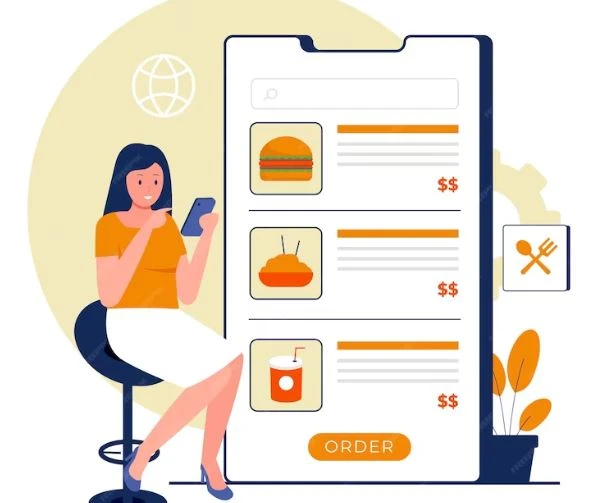
A restaurant management app development should be proceeded with advanced features that can facilitate customers in every possible way. It is an important requirement that should be fulfilled by hiring best outsource development teams having expert knowledge in restaurant app development. If you do not know what these features are, take a look at the points defined below.
Welcome Screen
The initial screen that customers encounter upon launching your application serves as a crucial entry point. Functioning as the digital storefront of your business, this screen not only showcases essential information about your distinctive offerings and brand narrative but also provides details regarding your location. Additionally, it offers a tantalizing glimpse into the diverse cuisine you provide, allowing users to explore your culinary offerings virtually.
Furthermore, this primary screen acts as a dynamic gateway to immerse users in the immersive world of your brand. Through engaging visuals and compelling narratives, it seeks to captivate users and draw them into the unique experience your establishment offers. By strategically blending key elements such as location specifics, culinary highlights, and authentic customer testimonials, this screen aims to not only inform but also create a compelling narrative that resonates with users.
Food Menu
Within a restaurant application, the menu section emerges as a pivotal component, playing a vital role in enhancing the user experience. While the structure of such sections is often standardized, the innovation lies in the nuanced details. One such innovation involves the incorporation of an advanced search feature that goes beyond the conventional, enabling customers to navigate through the plethora of offerings based on specific criteria such as taste preferences, course selections, and ratings.
Furthermore, an impactful addition to the menu section involves the integration of visual elements, transforming it into a sensory and immersive experience. By incorporating high-quality photos of each dish accompanied by a concise yet enticing description highlighting its distinctive components or unique selling points (USP), the menu transcends traditional lists. This visual and informational enhancement not only aids customers in making informed choices but also serves as a visual feast, enticing users with a tantalizing preview of the culinary delights awaiting them.
Table Reservation
While not yet a ubiquitous offering, the table-booking feature is steadily gaining traction within the restaurant industry. By incorporating this functionality into your restaurant app development, you empower customers with a range of choices when reserving a table. Notably, the innovation extends beyond the conventional selection of a standard table, allowing patrons the option to choose a specific table through the integration of an interactive floor map.
Moreover, the inclusion of a specific table selection feature adds a layer of personalization to the dining experience, allowing customers to choose their preferred seating arrangement based on factors such as ambiance, proximity to specific areas, or even personal preferences. This level of detail not only caters to the diverse needs and preferences of your clientele but also positions your restaurant application as a forward-thinking platform that leverages technology to offer a more tailored and interactive dining reservation experience.
Online Orders
The inclusion of online ordering stands as a important feature within app development for restaurants, offering a seamless and convenient way for customers to place their orders. Elevating this functionality involves the integration of geolocation capabilities within the app, presenting an opportunity to enhance the user experience. By allowing customers to effortlessly pinpoint their delivery address through geolocation services, the app streamlines the ordering process, reducing the time and effort required for users to input their details manually.
Taking this convenience a step further, the incorporation of real-time order tracking becomes a valuable addition to the online ordering experience. Once an order is placed, customers can actively monitor its progress and receive updates on its location, providing them with a dynamic and engaging perspective on the journey of their meal. This detailed tracking feature not only serves practical purposes by keeping customers informed about the estimated delivery time but also adds a layer of transparency and excitement to the entire ordering process.
Swift Payments
The payment processing system within a restaurant app serves as a critical component in facilitating seamless transactions between customers and the establishment. This system encompasses a range of functionalities designed to enhance the user experience, providing convenience and security. Typically, it supports various payment methods such as credit/debit cards, mobile wallets, and sometimes even alternative payment options, catering to the diverse preferences of customers.
Moreover, a well-designed payment processing system goes beyond mere transaction execution. It often includes features such as digital receipts, enabling customers to receive confirmation of their payment directly through the app. Additionally, the system may facilitate split payments, allowing groups to divide the bill seamlessly, enhancing the social dining experience. Furthermore, loyalty programs and integration with reward systems may be incorporated to incentivize customers who want to regularly visit the app.
Push Notification
The push notification system in restaurant app development plays a pivotal role in enhancing user engagement and communication. This feature enables the app to send real-time alerts and updates directly to users’ devices, keeping them informed about various aspects of their dining experience. Restaurants can leverage push notifications to notify customers about special promotions, discounts, or new menu items, fostering a sense of anticipation and encouraging repeat visits.
Furthermore, personalization is a key aspect of an effective push notification system. Restaurants can tailor notifications based on customer preferences, order history, or location to deliver more relevant and meaningful content. For example, a user who frequently orders a particular cuisine may receive notifications about new dishes within that category. This personalized approach not only adds value to the user experience but also strengthens the relationship between the restaurant and its patrons.
POS Integration
When evaluating a restaurant management system, one of the most critical features to consider is the integration of Point of Sale (POS) systems. Effective POS integrations streamline various aspects of restaurant operations, including order processing, payment handling, and inventory management. By seamlessly connecting the POS with other management tools, restaurants can enhance efficiency, reduce errors, and improve the overall customer experience.
Additionally, robust POS integrations facilitate better communication between front-of-house and back-of-house operations. This minimizes delays and helps maintain high service standards. Moreover, by consolidating data from the POS system with other operational tools, restaurants can gain valuable insights into sales trends, employee performance, and inventory levels, which can drive strategic planning and optimization.
Floor Planning
Whether you are launching a new restaurant or revitalizing an existing location, a key feature to prioritize in your restaurant management system is the floor planning capability. This tool plays a crucial role in optimizing your dining space, allowing you to design and adjust the layout according to your operational needs and customer preferences. A well-structured floor plan can enhance the flow of service, improve guest interactions, and maximize seating efficiency.
In addition to improving operational efficiency, an effective floor planning feature also enables you to tailor the dining experience to better suit your clientele. You can create designated areas for large groups, intimate settings, or even outdoor seating, depending on your restaurant’s concept and customer demand. This flexibility allows you to adapt to various events, such as private parties or special promotions, by reconfiguring the space as needed.
Inventory Management
An inventory management feature in a restaurant app is vital for maintaining operational efficiency and controlling costs. By providing real-time tracking of stock levels, this feature enables restaurant owners and managers to monitor ingredient availability, reducing the risk of running out of essential items during busy service hours. With accurate inventory data, restaurants can make informed purchasing decisions, ensuring that they only order what is necessary and minimizing waste.
Moreover, an effective inventory management system enhances overall menu planning and pricing strategies. By analyzing inventory usage patterns, restaurant operators can identify which dishes are most popular and which ingredients are underutilized. This insight allows for better menu adjustments, promoting dishes that contribute to higher profitability while eliminating those that are less effective.
Sales Tracking
A sales tracking feature in a restaurant app is essential for providing valuable insights into the financial performance of the establishment. By monitoring daily sales, managers can easily identify peak hours, popular menu items, and trends in customer preferences. This data is crucial for making informed decisions about staffing levels, inventory management, and menu adjustments. With a clear view of sales performance, restaurant operators can implement targeted marketing strategies to boost sales regularly.
In addition to enhancing operational efficiency, effective sales tracking helps in forecasting and budgeting. By analyzing historical sales data, restaurant owners can project future sales trends, allowing for better financial planning and resource allocation. This foresight can inform decisions about seasonal menu changes, promotional campaigns, and capital investments, ensuring that the restaurant remains competitive and financially viable.
How Much Does Restaurant App Development Cost?
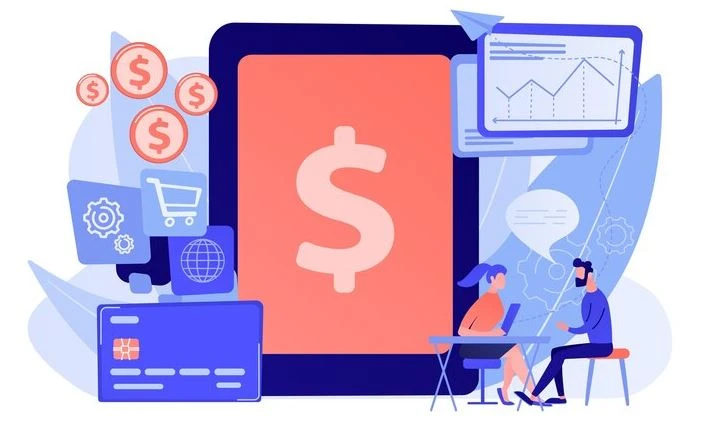
The development cost of a restaurant management app can vary significantly based on several factors, including the app’s features, complexity, platform (iOS, Android, or both), design requirements, and the development team’s hourly rates. A basic restaurant management app development with essential features such as menu display, online ordering, and reservation management may have a lower cost i.e. $5000 – $10000. However, if you intend to incorporate advanced features like real-time order tracking, payment processing and others, the development cost will increase accordingly.
Moreover, the choice between a custom-built app and using pre-existing frameworks or templates can impact the overall cost. Custom restaurant app development allows for greater flexibility and tailored functionalities, but it often comes with a higher price tag. On the other hand, utilizing pre-existing solutions may reduce costs but might limit the app’s uniqueness and scalability.
Why Choose StruqtIO for Restaurant App Development?
StruqtIO is widely recognized for providing exceptional cross platform app development services to clients across the globe. Our notable portfolio of successful projects serves as evidence of the commitment and excellence we bring to the industry of restaurant application development.
Opting for StruqtIO ensures that you receive top-tier restaurant app development outsourcing services customized to meet your unique needs. Our proficient team possesses the skills and knowledge to craft a variety of software applications, with the potential to propel your business to unprecedented levels of success.
Frequently Asked Questions
| What is a restaurant management app? A restaurant management app is a digital tool designed to streamline various operational aspects of a restaurant. It enhances efficiency and improves customer service by providing real-time data and insights for better decision-making. |
| Why restaurants need a management app? Restaurants need a management app to improve operational efficiency by automating tasks like inventory tracking, staff scheduling, and order management. Additionally, it enables better customer experiences through streamlined processes, data-driven insights, and enhanced communication. |
| What are the factors that influences the cost of restaurant app development? The cost of restaurant app development is primarily influenced by the complexity of features and functionalities required. Additionally, the choice between custom development versus using pre-built solutions impacts costs, as custom apps typically require more time and resources to create. |
Final Words
That brings us to the end of this blog in which we have discussed about restaurant app development in detail. These apps are currently in demand, as every food chain business is looking to develop them to ease their management operations. They provide plenty of benefits in handling different types of tasks such as food ordering, payment processing, table booking and more others. It is therefore recommended to develop them by taking services from a professional vendor who understands the technicalities of app development for restaurants.
If you are looking for a company that could help you to create cutting-edge restaurant management apps, call us today. We would help you to build a stunning restaurant management app that can transform all the operations of your food chain business effortlessly.

Empower your digital journey with StruqtIO - Your dedicated partner for cutting-edge custom software development, innovation, and digital transformative solutions. Harness the power of technology to elevate your business and redefine your digital landscape today.
